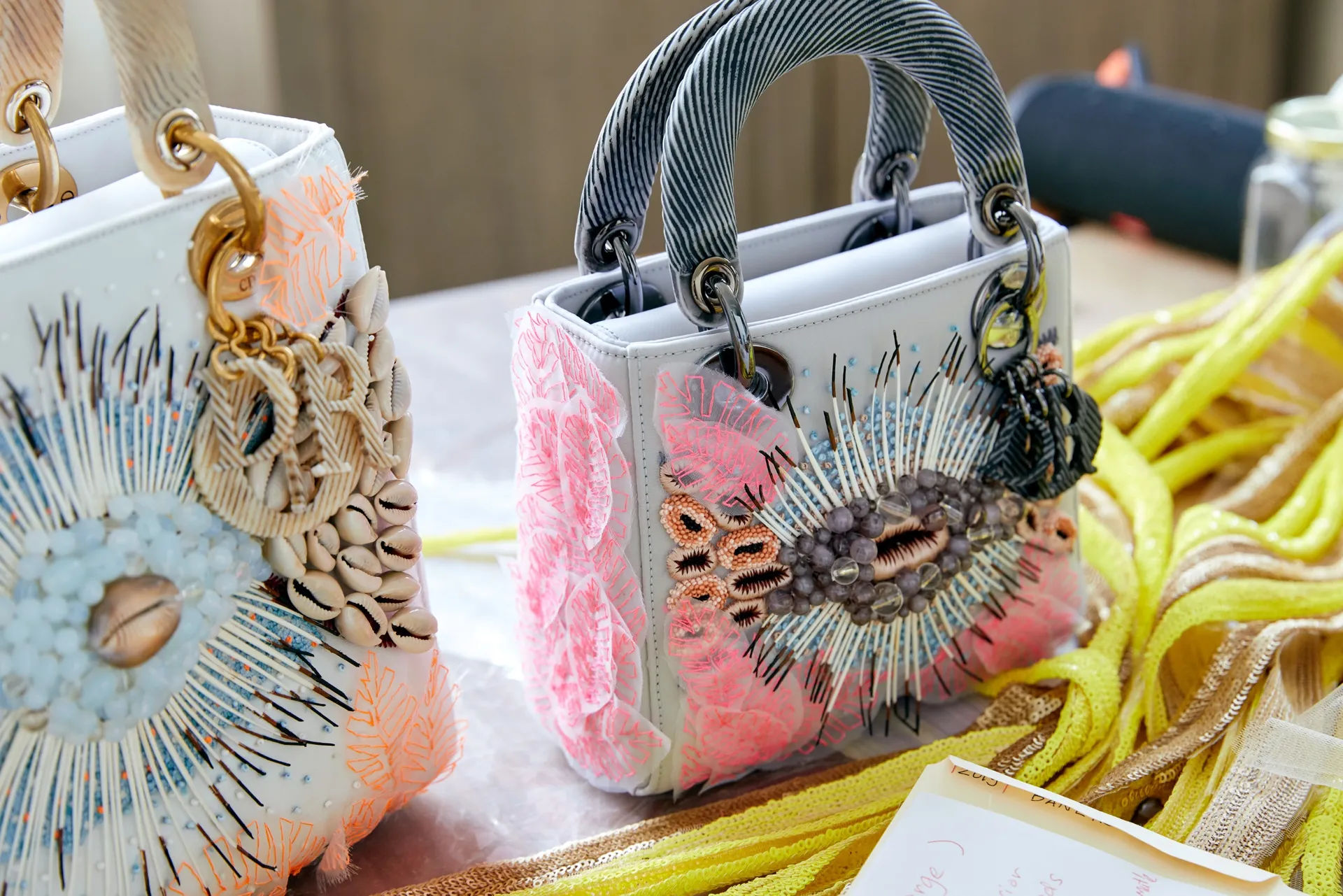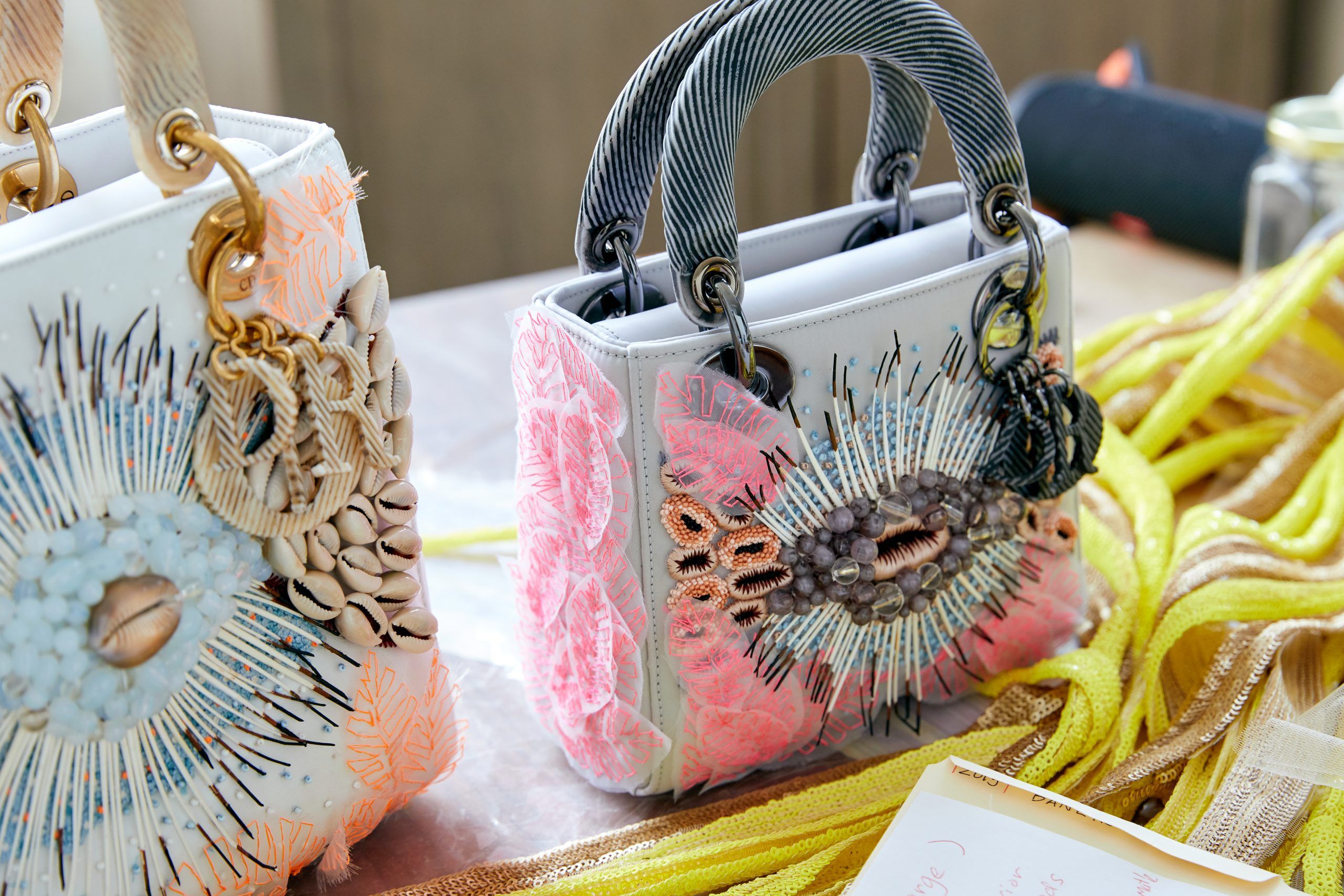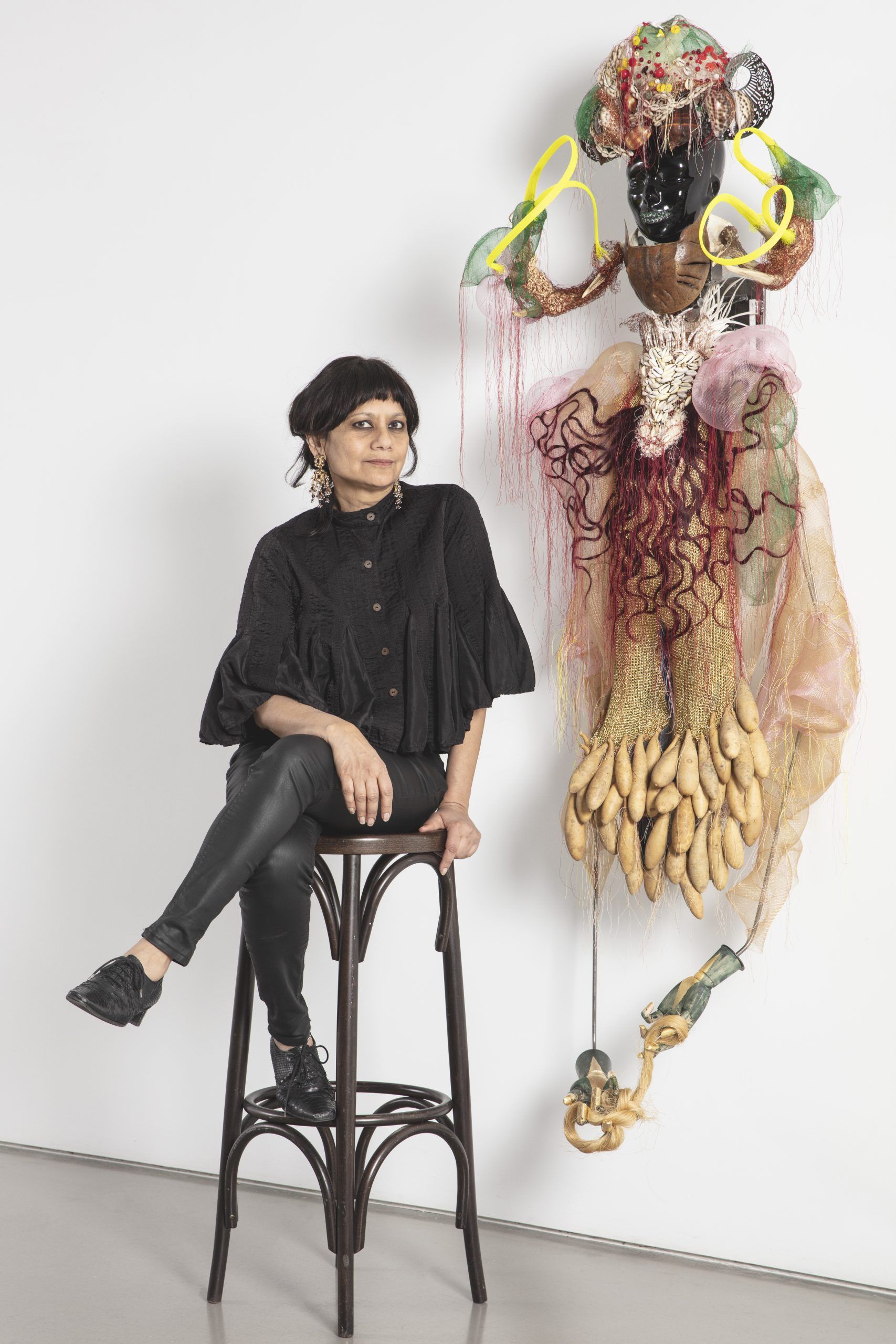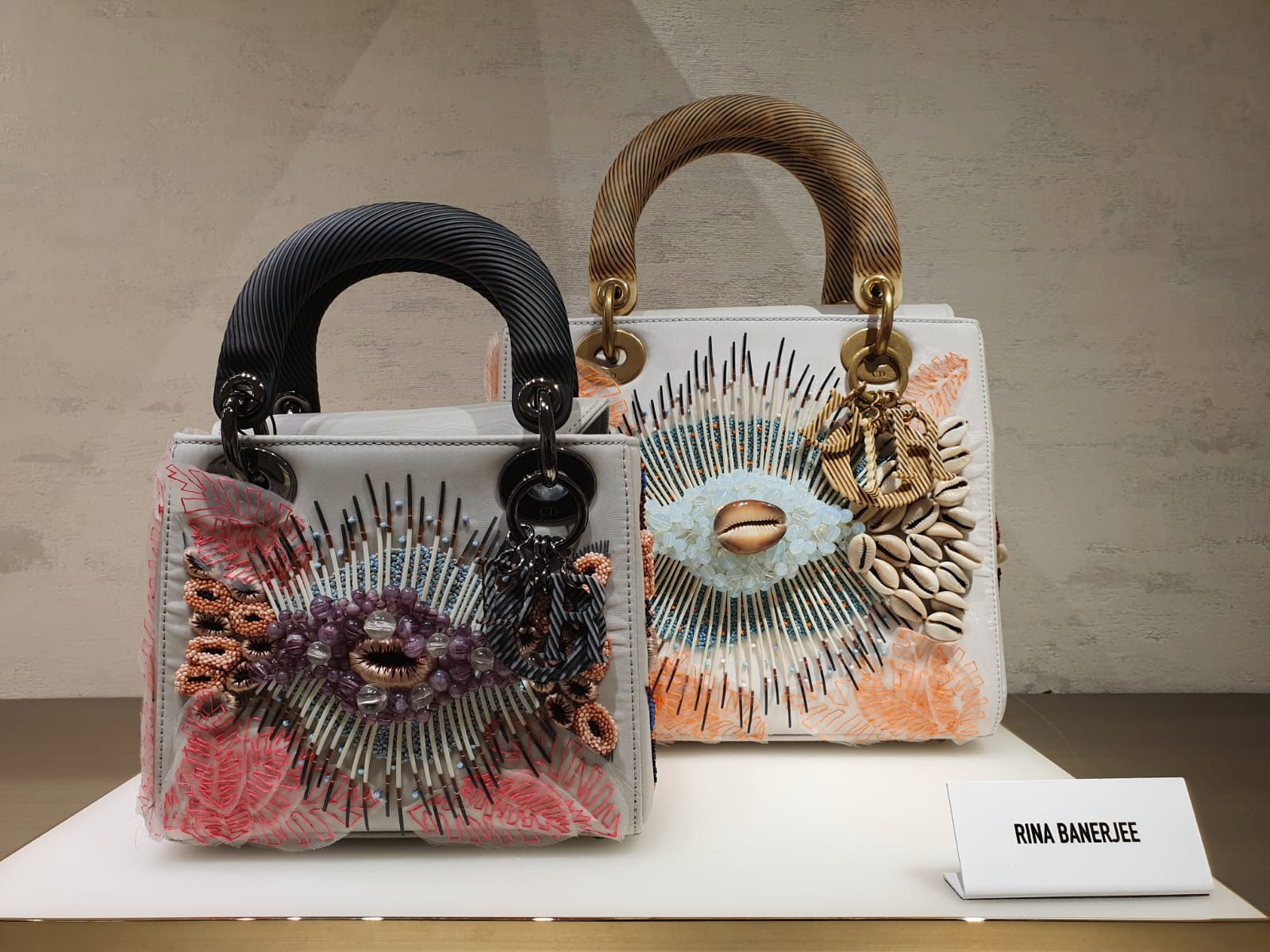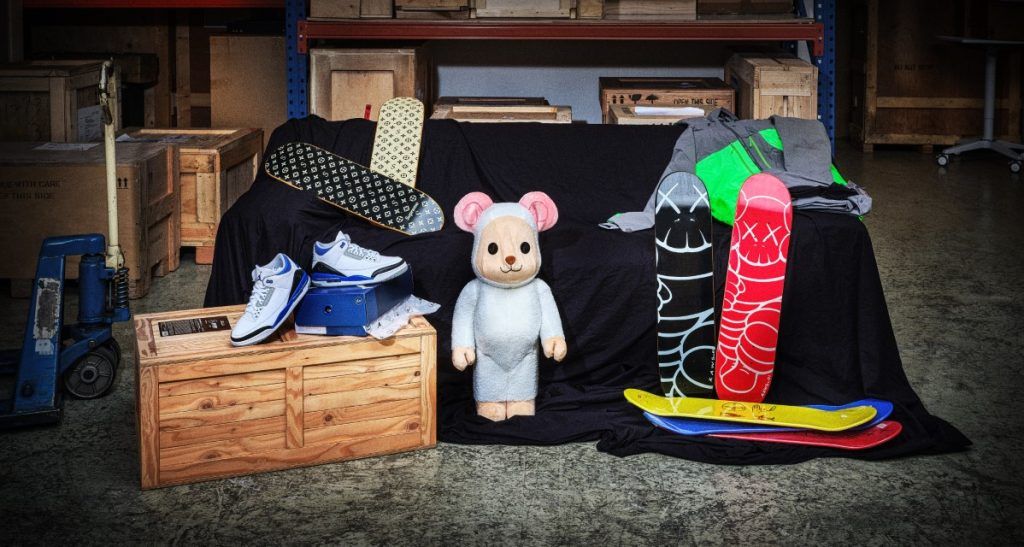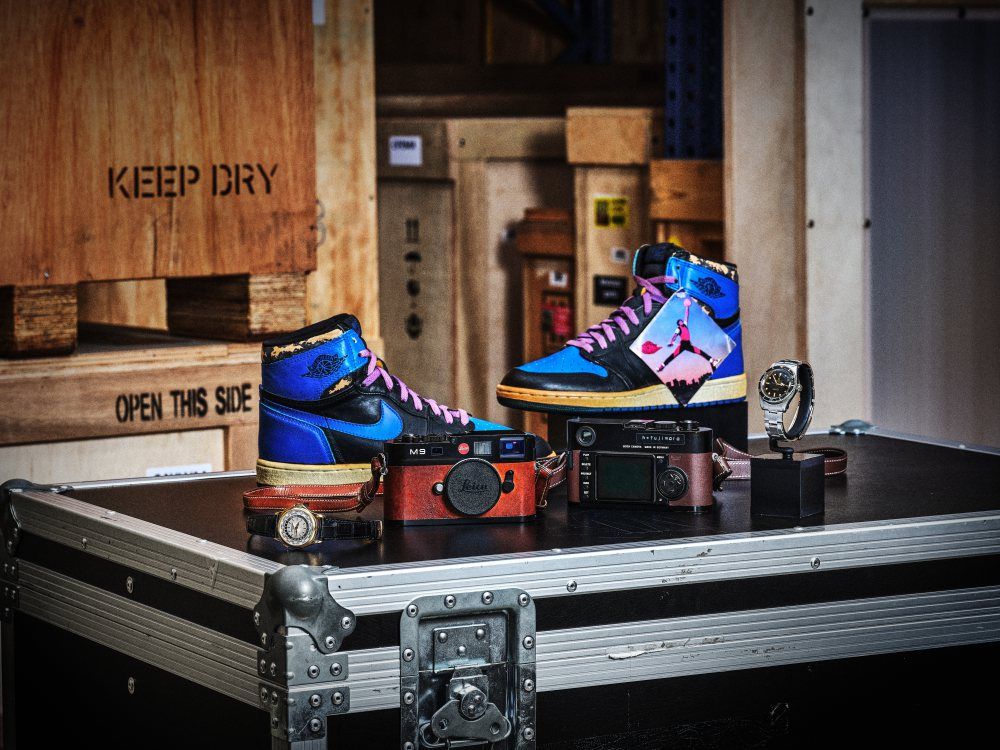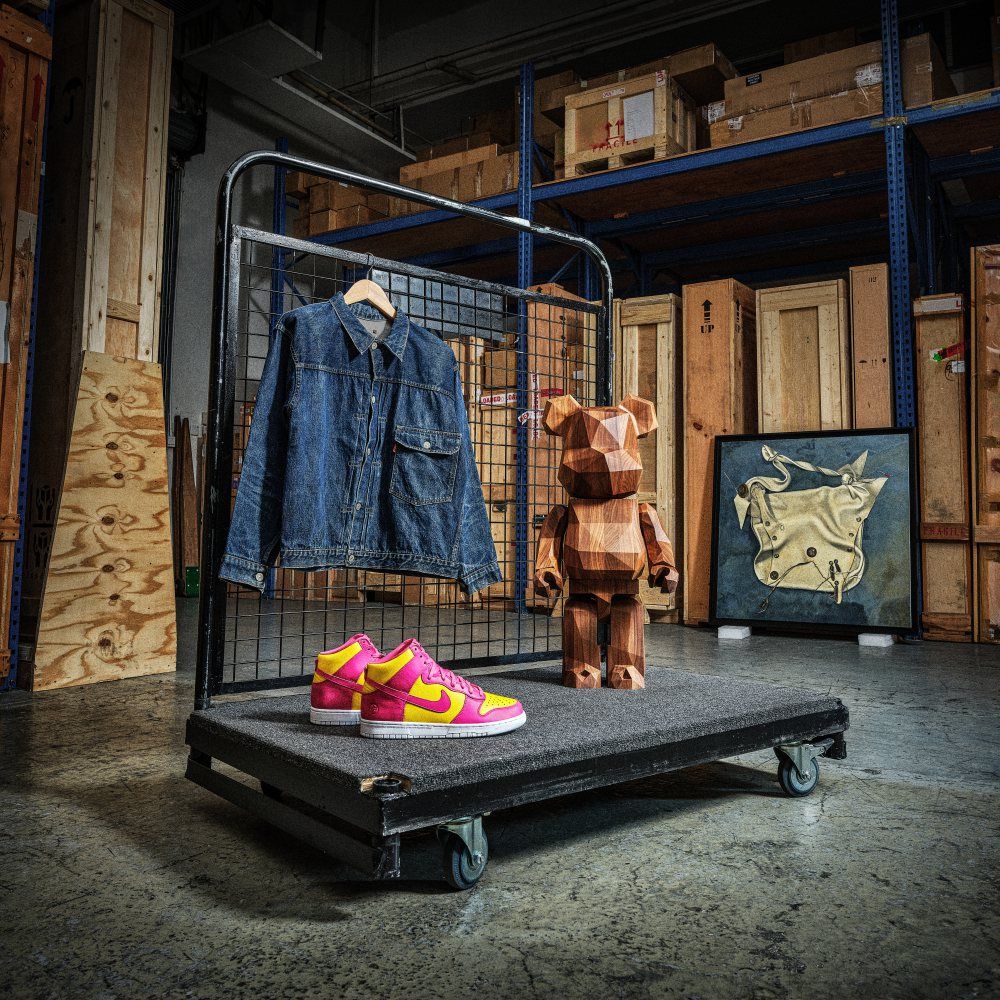The relationship between fine artists and luxury designers is nothing new, with fashion houses looking to work with both famous and rising stars in the art world, leveraging off their unique aesthetics and fan bases while offering their own consumers something to look get hyped about, and perhaps even invest in. So how do these collaborations fare in Asia?
When Louis Vuitton unleashed its polka-dot-crazy collection in collaboration with Japanese artist Yayoi Kusama in January 2023, endorsed by celebrities from Bella Hadid to Jung Hoyeon, it took the fashion world by storm.
The collection was everywhere and quickly dominated billboards, digital ads, runways, and stores, and was seen donned by the most fashionable “It” girls and guys the world over. Merging two signature aesthetics – Kusama’s playful shapes with Louis Vuitton’s monogram – it seemed an unlikely collaboration for a fashion house that thrives off its more serious and monotoned designs, yet worked so well. But it was no coincidence, and what’s more, it was the second time that the two talents united.
In fact, LV, and many luxury fashion brands across the world, have worked with many renowned and up-and-coming artists over the decades. Oftentimes, it can be a match made in heaven, offering the opportunity for special edition limited-time collections to gain hype, while giving consumers something exciting and unique to add to their outfits. After all, fashion, in many ways, is art in itself.
Let’s take a deep dive into the relationship between fine artists and luxury designers, how they work together, and how the trend fares in Asia:
The relationship between fine art and fashion
Fashion houses today are known to work with brands, artists, and sometimes even competitors to create buzzy collaborations that consumers love.
One highly favoured form of collaboration involves partnering with fine artists. Designers, in numerous aspects, embody the essence of artists. This ranges from the artistry involved in fashion sketching, the intricate process of selecting and crafting fabrics, and the careful consideration of colour palettes. Additionally, certain fashion pieces, particularly those crafted for runway displays like haute couture, possess a sculptural quality that interprets fashion as its own distinct art form.
It’s hardly surprising then that designers tap into the minds of artists to bring forth a different dimension to their works. Fine artists, in their most typical definition, refer to painters, sculptors, and the like, with many modern artists today gaining large followings thanks to platforms like social media and the expanding reach of the fine art market.
These collaborations can vary: sometimes, the artist might design a new shape, pattern or function for a collection. Oftentimes, the designer and artist work together to bring something that can benefit them both. Some brands, like Dior, host special collaborations to get more artists involved and to give a platform to rising stars in the industry.
Why these collaborations
Fashion houses engage with fine artists due to the mutually beneficial synergy. Collaborating with artists infuses unique creativity into their designs, setting them apart in the competitive market. This collaboration not only enriches the artistic value of their products but also attracts a broader audience drawn to the fusion of fashion and art, ultimately bolstering their brand prestige and market presence. What’s more, collaborations with fine artists can infuse cultural relevance into fashion collections. Artists often draw inspiration from societal issues, historical events, and cultural contexts, which can resonate deeply with consumers seeking meaning in their purchases.
Iconic collaborations
Some of the most popular collections by artists and designers include Elsa Schiaparelli x Salvador Dalí, Stella McCartney x Yoshitomo Nara, Louis Vuitton x Richard Prince, Alexander McQueen x Damien Hirst, and Loewe x Studio Ghibli, to name a few.
LVMH is at the forefront of this in many aspects. “Through carefully thought collaborations, LVMH maisons look to create better connections with their audiences as well as expressing their creativity and excellence in innovative ways,” explains Julien Yung Mameaux, director/VP at LVMH Moët Hennessy, “Collaborations are a way for us to shift sideways into new territories while staying true to our values.”
One of its recent collaborations was a joint effort between Hennessy XO and Kim Jones, creative director of Dior Homme and artistic director of Fendi’s women’s collection, which “brings Cognac and Couture together,” as Yung Mameaux puts it. The limited-edition XO cognac showcases the iconic Hennessy X.O decanter, elegantly adorned in an amber gold pret-a-porter garment, characterised by flowing lines. This exclusive offering is accompanied by a distinct pair of luxury sneakers, presenting a cohesive ensemble of refined craftsmanship. It’s a “masterpiece” and “a disruptive nod to pop culture”, says Yung Mameaux.
“Whether we are talking fashion, wines and spirits or jewellery, LVMH brands constantly seek to expand horizons and push boundaries, creating highly desirable experiences,” says Yung Mameaux, “Often it is about bridging craftsmanship and tradition on one hand with imagination and innovation on the other.”
Meanwhile, in 2020, Dior hosted its fourth edition of the Lady Dior limited-edition collections in collaboration with 11 artists worldwide.
Some artists use these opportunities to promote important messages. Rina Banerjee, a leading artist who took part, interpreted the Lady Dior Bag inspired by her “desire to travel,” she tells us. Her aim was to evoke the ability to be “free and agile in this travel without fear of harm and to pass between continents, islands between places that resist our travel and even forbid it,” she says, adding that her interest lies in social issues related to women being prevented from easy travel and the restriction of people of colour from entry. The “Evil Eye” in the design symbolises securing your safety. The flora, leaf and seashell grace the front and back of the bag “embroidered with rivers of travel”. The style of the bag, she says, is that of a basket resort bag that we may pick up as a souvenir, like “an inexpensive token of remembering our travel”.
For Banerjee, fashion and how we look to others and ourselves is an expression of our deep connection to nature, love and beauty, yet fashion and art struggle to manage this quest and elicit our connection to nature. The sculptor is presently developing a collection of clothing and accessories, intended to be presented as a series within a forthcoming exhibition venue. This project effectively brings to life local craftsmanship and textile techniques such as batik, which are largely underrepresented as a painting or clothing, she says.
“I am interested in unleashing our celebrated uniform as that which has no colour, no pattern, no cultural specificity,” she says, “The neutral is not natural and nature is a source of inspiration when thinking about the comfort of our bodies… allowing ease of mobility and using natural fibres. Bead and embroidery from mended articles or recycled clothes can personalise the cloth and recall its past identity.”
For Unskilled Worker, aka Helen Downie, her collection with Gucci in 207 was created by the paintings she would make after being invited to the Gucci shows. The bold and imaginative designs featured wide-eyed colourful portraits of figures. “I’d imagine the characters wearing the clothes, their lives, many of them were people I’d known in my youth,” she says, “The collections were so rich with the most incredible references, they were portals to other worlds, the paintings flowed from these references and at the time of making the pictures neither me or Gucci had any idea that they would be used for a collection, that evolved later.”
Having the chance to work with Gucci was organic and grew out of love for the vision that (then-creative director) Alessandro Michele had for the brand, she says. “ I just loved so much to paint them, it felt like I was engaged in a creative conversation with Alessandro Michele,” she tells us, saying it felt like a “magical experience”.
Fashion is an important way to express oneself. “All fashion is a way for humans to express themselves, we dress and make decisions in the way we wish to be seen,” says Downie. While the artist has had many offers to work with other brands since the collaboration with Gucci, she says she didn’t decide to do any of them as what she had with Gucci came naturally.
In July, CHAT (Centre for Heritage, Arts and Textile), a nonprofit art centre that blends textiles, art, design, craft, and heritage at The Mills announced its ANTEPRIMA x CHAT Contemporary Textile Art Prize which is a collaboration with the international fashion brand ANTEPRIMA. This initiative aims to foster creativity and innovation in the realm of textile art within the context of contemporary Asian society.
“Collaborations serve as our muse, bridging the worlds of fashion and art. Just as artists collaborate across disciplines, we unite with fine artists to craft collections that blur boundaries,” says Izumi Ogino, founder and creative director of ANTEPRIMA.
“CHAT’s programmes also aim to bridge between old and new, passing stories to the future. Because her [Ogino’s] challenging spirit and innovative mind echo with CHAT’s mission to foster and promote contemporary textile art from an Asian perspective, CHAT and ANTEPRIMA agreed to collaborate and launch this inaugural prize,” says Takahashi Mizuki, executive director and chief curator at CHAT, about the collaboration. “Good fashion designers also share the same attitude as artists, who are always seeking originality. Fashion and art operate in different arenas, but sometimes they come together to pioneer new horizons in both fields, just as how Schiaparelli and Salvador Dali stimulated each other’s creativity and left remarkable pieces in the past,” adds Mizuki.
“These partnerships infuse our creations with a new dimension, as their visual narratives intertwine with our sartorial tales,” says Ogino.
It’s clear that these collaborations have had an influence on the fashion world as a whole, but how have they fared in Asia? As reported by the media, the collaboration between Louis Vuitton and Yayoi Kusama, for example, created an instant sensation in Asia, with Japan in particular showing remarkable interest. The inclusion of actor Shotaro Mamiya as a representative for this collection further amplified its popularity among the local audience.
Popularity in auctions
Certain fashion items like the Chanel classic flap bag, Hermés Kelly, Hermés Birkin, and Lady Dior bag, are all considered to be highly investable luxury goods that usually see high returns on the second-hand luxury market. Acquiring these items firsthand, however, is no easy feat with many of these brands being notorious for having long lines, long waiting lists, and in some cases, obscure, unofficial rules like having to spend as much as you would for an item just to join a waiting list for it, with Hermés being a classic example of this, according to reports.
The same of course goes for fine art, with many one-off pieces being deemed priceless, especially if the artist is deceased or considered one of the modern greats, with many collectors willing to fork out hundreds of thousands, if not millions, for a piece. These too, are considered investable most of the time, just like the luxury bags.
So what happens when you merge the two? High fashion brands with fine artists, in the second-hand luxury market? It really depends. In 2021, auction house Sotheby’s teamed up with Loewe to co-release a collection of artisan-crafted clay chestnut roasters customised by three artists from around the world.
Personal collections from artists also make it to auctions. Hiroshi Fujiwara, a musician and pioneer of streetwear culture, recently did an auction with Sotheby’s bringing forward relics from his past including pieces from brands like Louis Vuitton and Goyard. “There is certainly an excitement that surrounds the personal collections of artists,” says Jane Ki, jewellery specialist at Sotheby’s Asia, “Whether with luxury, fashion or art, provenance always commands a certain level of interest and confidence in the piece, adds an extra level of value and history if you will. It’s a window into the personal life of these artists which are admired or well respected.”
As for high fashion brands tapping into the creative minds of artists to launch unique collaborations? They’re here to stay.

